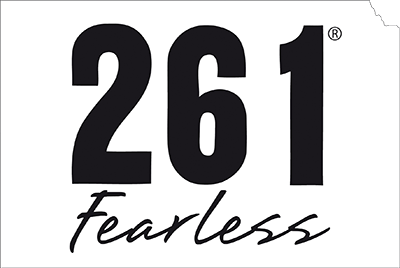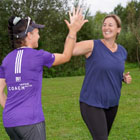The International Osteoporosis Foundation tells us that 1 in 3 women over 50 will experience a bone fracture due to osteoporosis, a condition where bones are fragile and break easily. And the World Health Organisation estimate that more than 500 million people worldwide are living with osteoarthritis, the commonest form of arthritis. Poor bone health can lead to disability, reduced quality of life and even an early death. What can we do to protect our bones both now and in our future?
It’s important to remember that bones are very much more than a coat hanger for the rest of our body to hang from. Alongside supporting posture, they allow a great range of movement, protect delicate organs, store minerals, produce red blood cells and more.
Our 261 Coaches recently received an excellent Empowerment Class webinar with Dr Ai Lyn Tan, an Associate Professor and Rheumatologist working in Leeds, England. She reminded us that bones are very much living organs which are constantly adapting to keep themselves and the joints in working order. Osteoblasts form new bone tissue and osteoclasts break it down to release the minerals inside. Our bones are constantly changing and ‘remodelling’ themselves.
Movement and exercise encourages activation of the osteoclasts so they are stimulated to break down bone. The osteoblasts are then triggered to build up the bone. If any part of this cycle is disrupted, then bones are affected and it can lead to bone disease.
Osteoporosis happens when bone is lost at a faster rate than it is being made. Bone density then reduces and bones are fragile. This is more common in women around the time of the menopause due to declining levels of the hormone oestrogen which plays an important role in healthy bones.
Osteoarthritis happens in joints where bones meet. In a knee joint with osteoarthritis, the cartilage within the joint, which usually acts as cushioning, becomes thin. You might also find bone spurs (osteophytes) which are bony overgrowths produced by the knee to help it remain stable. And, if the joint is inflamed it can become swollen, painful and stiff.
What can we do to keep our bones healthy?
Thankfully there is plenty we can do to keep our bones and joints healthy.
- Exercise. Regular exercise is crucial for good bone health. It’s not true that running will wear out your knees. In fact, it can be good for your knees, even if you have existing osteoarthritis. It helps reduce pain and improves function and studies have shown that runners have fewer problems with knee pain and osteoarthritis than non-runners. Exercise is really important for people with osteoporosis too and Dr Tan was keen to stress that in fact, doing more would be better than doing less (of course with the caveat that any existing fractures need to heal!) Both impact exercise and resistance exercises will help bone strength and a combination of the two is ideal! Adding in posture and balance exercises will reduce your risk of future falls too.
- Nutrition. Exercise alone is not enough. We need to make sure our diet contains the building blocks our body needs to make new bone. Calcium is vital and a glass of milk a day will help us reach our calcium requirements. We also need vitamin D which we can get from certain foods, sunlight and a daily vitamin D supplement. A general healthy diet with plenty of protein, fresh fruit and vegetables will all help to support our bone health.
Let’s take these simple steps to make sure our bones are healthy. Not only will we feel good now but we’ll be setting ourselves up for a healthy future.



